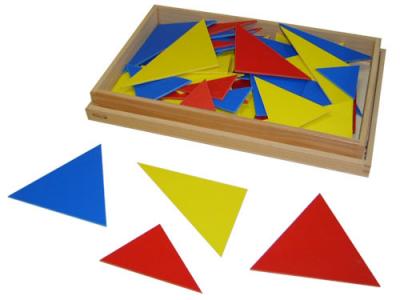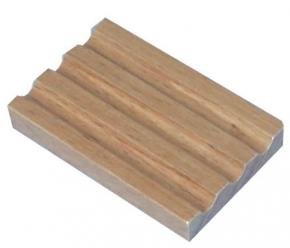Detective Adjective Game/Exercise
This classic Montessori material offers a hands-on approach to understanding the function of adjectives in language. Designed for children aged five and up, the Detective Adjective Exercise helps children grasp how descriptive words refine and clarify communication.
The set includes a wooden box containing 54 triangles representing 6 different types, categorized by:
- Size: small, medium, and large
- Colour: red, yellow, and blue
- Type: two types of triangles, isosceles and scalene, including variations with acute, right, and obtuse angles
This engaging grammar material transforms adjectives into a discovery-based game. Children practice logical thinking, observation, and classification while building grammar awareness and language skills.
Purpose
To give the child a deeper understanding of the function of the adjective.
Material
Fifty-four triangles of six different types, prepared according to size, colour, and distinction of sides and angles (types of angles).
- Triangles are small, medium, and large.
- There are three colours.
- Two types of triangles: isosceles and scalene (including acute-angled, right-angled, and obtuse-angled).
Additional materials: pencil, slips of paper, scissors.
Presentation 1: Exercise 1
Have the child spread the triangles out on a table or mat.
The teacher says: “I wonder, out of all these triangles, do you think you know which one I would like?”
She writes: “The triangle.”
When the child makes a selection, indicate that it is not the correct one. Tell the child: “I will write you a clue.”
Step 1 – Size
Take a slip of paper and write the word “large.”
Cut the phrase “the triangle” into separate slips. Place “large” between them to form: “The large triangle.”
Say: “Perhaps we can make the game easier by putting away all the triangles except the large ones.”
Place all the small and medium-sized triangles into a box and set them aside.
When the child selects a triangle, say: “No, that's not the large triangle I was thinking about. Let me write you another clue.”
Step 2 – Colour
The teacher writes another clue — the word “yellow” — on a label, cuts the original label, and inserts “yellow” in the appropriate place to form: “The large yellow triangle.”
Say: “Let's put away all the triangles except the yellow triangles.”
The child reads the phrase, makes a selection, and is told: “That is not the one. Let me write you another clue.”
Step 3 – Type
The teacher writes “isosceles” and places it in the phrase to form: “The large yellow isosceles triangle.”
Put away all triangles except the isosceles ones.
If the child selects incorrectly again, write another clue.
Then the teacher writes “right-angled” and adds it to the phrase to form: “The large yellow isosceles right-angled triangle.”
The child selects the specific triangle.
Note
The key is that no matter what triangle the child gives you, it is not the one you are thinking of until all descriptive adjectives are in place.
Approximate Age
From five years onward.



Reviews for Detective Adjective Game/Excercise